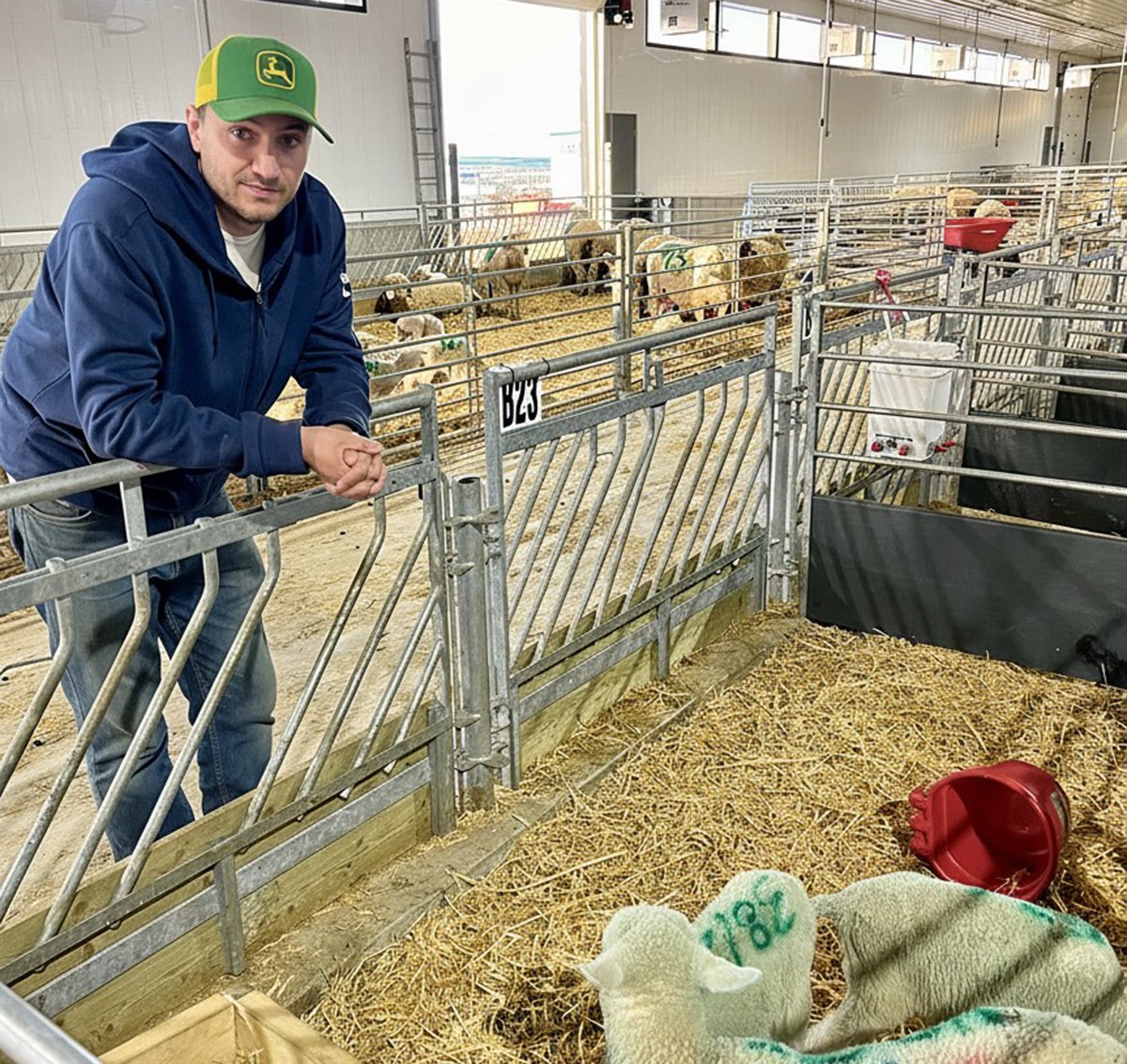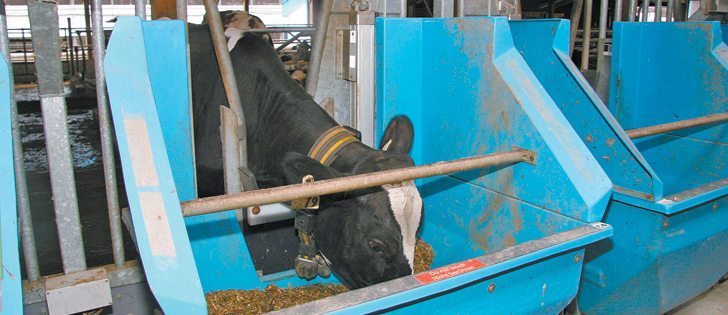Practical studies | Information on animal welfare, feed rations, pain management and calf weaning shared with producers
AGASSIZ, B.C. — Farmers may sometimes feel that they are from Venus, while scientists may seem like they are from Mars.
Bringing the two into the same orbit is one of the goals at the University of British Columbia’s dairy education and research centre in Agassiz.
The centre was established 15 years ago as a working dairy farm, where 250 registered Holsteins are milked twice each day.
As well, graduate students and researchers from around the world study the animals’ behaviour, welfare and health.
Read Also

Solar, sheep provide valuable farm diversification
Eric Steeves says raising sheep on forages grown under solar panels provided economic stability and perhaps even saved his family’s fifth generation southern Alberta grain farm.
Much of the research is directed at answering farmers’ questions about feed intake, improved illness diagnosis, handling lameness and improved heifer development.
“Our research program is on the cow end, animal welfare and behaviour,” said facility manager Nelson Dinn, who grew up on a dairy farm and is a UBC graduate.
“All the research we do here is applicable to our producers and is useful to the Canadian dairy system.”
The work is intended to offer hands-on, practical solutions. For example, research from the centre contributed in large part to the most recent dairy code of practice.
The centre is self supporting and does not receive subsidies from the university or its landlord, Agriculture Canada. Income comes from sales of milk and cattle. The centre grows most of its own forage.
There are six staff besides the researchers and students. The students can live on the site and do farm chores in exchange for rent.
Animal welfare and improved cow comfort dominate.
“The animal welfare program at UBC is one of the most recognized animal welfare programs anywhere, and so the demand to come here and study is here,” Dinn said.
Students from 30 countries have worked at the site in the last decade.
“The more students we are able to put through here, the more research gets done,” he said.
About 500 animals live at the centre. All wear electronic ear tags, some may wear special necklaces or ankle bracelets and a few have had a dye job with special markings so they can be further observed on video.
The farm raises its own replacement heifers, and no new animals are introduced from other farms. Bull calves that aren’t involved in a re-search program are sold and probably end up in the Alberta feeding system. Local farmers buy surplus heifers.
Regular research reports written for laymen are released to all B.C. dairy producers and are included on the centre’s website.
Some of the research has reversed common practices.
For example, research is changing the way newborn calves are fed.
The old code of practice recommended giving a calf 10 percent of its body weight in milk.
However, research at the Agassiz centre has shown these growing youngsters need more.
Calves traditionally received a bucket of milk in the morning and the evening, but the centre provides nipple feeders and allows the calves to suckle on demand.
“We’ve done a lot of research feeding the calf as much as it wants. On average, a calf given free choice will drink 10 to 12 litres of milk per day, which is about 20 percent (of body weight),” said Dinn.
“It takes advantage of that early growth potential of the calf.”
The new recommendation is included in the most recent code of practice.
The centre is also testing calf housing. Instead of rearing a calf alone in a pen, calves are placing two to a pen for better socialization.
Calves reared as a pair appear to adapt to new feeding systems within a few hours. Those reared individually take up to 50 hours to figure out the new feed regime and often start to lose weight. Pairing also stabilizes calves as they move into larger groups and new situations.
“That is one advantage of group housing, is the early socialization of calves,” he said.
A study is also starting to assess the impacts of leaving calves with their mothers for longer periods. A student from Norway is leading this project.
Weaning studies are using computerized feed and water systems to measure how much each calf consumes per day.
Each trough sits on an independent platform that sends all feeding and drinking data to a computer.
Calves’ body weight is recorded when they drink milk or water.
The calves also wear a special wrap on their ankles containing a directional switch. It tells the computer if the animal is standing or resting. Cameras observe behaviour around the clock.
Pain management studies encouraged the centre to change its dehorning practices.
At four days of age, the animal receives a small amount of sedative, the horn bud is shaved and caustic paste is used for dehorning.
“From a calf pain standpoint, that worked very well,” Dinn said.
Research projects also include adult animals.
Researchers have learned that cows suffering from metritis after calving had markedly different eating behaviour up to two weeks before calving. The computerized feeding equipment indicates this change before the onset of disease.
Nearby pastures serve as a living laboratory for lameness studies as well as behavioural observations.
“Four weeks of pasture access had a significant improvement on their degree of lameness,” Dinn said.
However, not all farms can release cows onto pasture. They may not have enough land or the ability to produce enough nutrition to maintain a modern, heavy milking cow on forage alone.
That has led to improving barn features to mimic pasture.
A better barn design that allows cows to more easily move around helped with foot health. Lameness was reduced significantly when cows were able to stand with four feet on a dry surface.
Many people may think that cows prefer living outdoors, but the centre has found they split their time evenly between the pasture and barn.
When temperatures are above 22 C, the cows prefer indoors where they can eat or lie down in stalls filled with sand. Sand has proven better than shavings or straw bedding. Urine is absorbed and the cows tend to clean the stalls themselves by kicking out sand during the day.
Manure is cleaned out while the cows are in the milking parlour. The sand is eventually spread back on the land.
Cow comfort is another primary area of study. Researchers have assessed stall width and design, and producers can use those findings when building or remodelling a barn.
Manure management is a major issue for this heavily populated region of the Fraser Valley with its high precipitation levels of 1,800 millimetres per year.
Winter spreading isn’t allowed, and farmers need to have storage for at least five months.
UBC engineers have patented technology to remove phosphorus from human waste, and a student pilot project is now working on a similar approach to manage dairy manure.
















